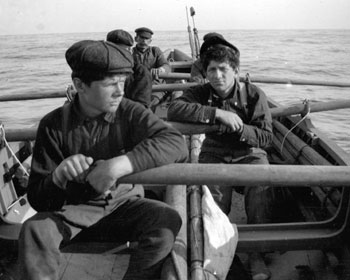Choosing Watches
The crew were now divided into two “watches," which were both work groups onboard the ship and the crews of each whaleboat. In spite of the dangerous and unpredictable work of capturing whales, seamen maintained routine duties associated with their respective positions.
On-Duty
Greenhands quickly "learned the ropes," becoming familiar with the routines of sailing. Ordinary seamen routines included sailing and scrubbing. This involved furling and unfurling sails, polishing brass fittings, and coiling feet of whale line. Regular practice drills with whaleboats allowed the inexperienced sailors to develop skill at maneuvering the boat and sneaking up on whales. Greenhands also learned from more experienced hands how to spot a whale spout and distinguish between species. All of the foremast hands, the boatsteerers and the mates did masthead duty. Standing look-out on a masthead was both dangerous and potentially profitable. Captains usually offered a reward of tobacco to the first seaman to spot a desirable whale.
![]() Jump to The Crew:
Greenhands
Jump to The Crew:
Greenhands

New Bedford Whaling Museum